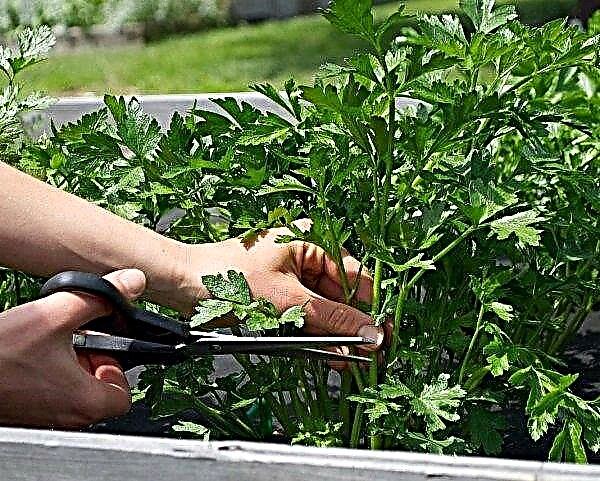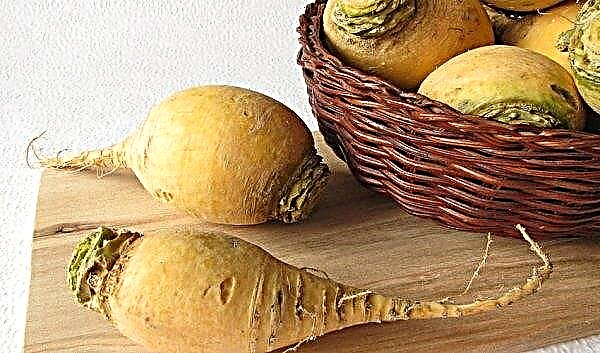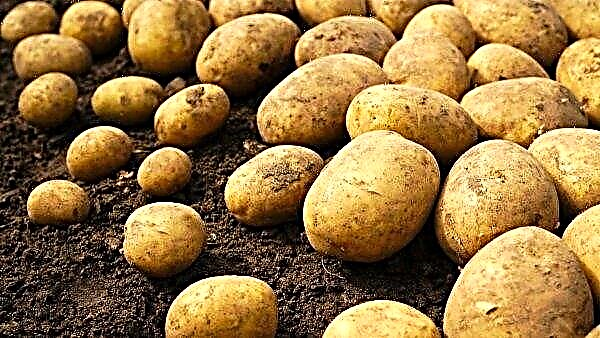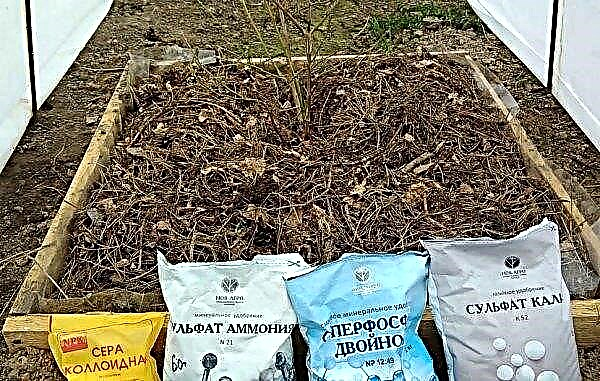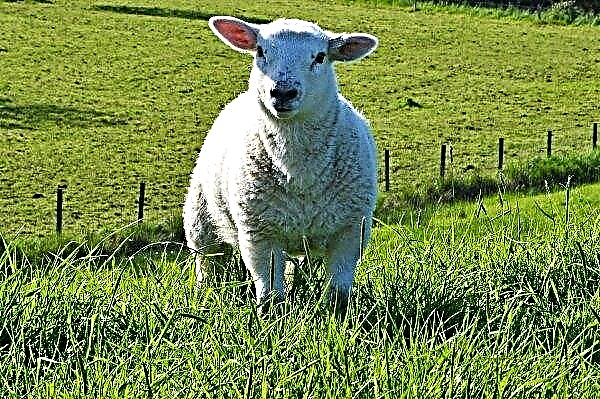The rose of the tea-hybrid variety Versilia attracts special attention not only because of its elegance and the classic form of buds of a gentle peach hue. Gardeners also liked the flower because it is characterized by abundant, long flowering, resistance to adverse weather conditions, and is also unpretentious in maintenance, winter-hardy and easy to maintain garden culture.
Botanical description of the plant
The rose variety Versilia was bred by French botanists in the 1990s to cultivate a cutting crop. Among florists, Versilia enjoys a good reputation as a productive species with prolonged viability in cut. The flowering of roses begins in the spring, and continues until the first frost, after which the flower does not immediately fade.
Important! During the flowering period of Versilia, it is necessary to actively remove the faded buds - this stimulates the growth of new flowers.
The described hybrid tea species has the following botanical characteristics:
- a rose refers to a terry look;
- inflorescences of a soft pastel tone (champagne, pinkish-peach);
- a goblet-shaped bud raised in the middle, grows on a high and strong peduncle; in the blossomed form has up to 12 cm in diameter and holds up to 25-30 petals;
- after opening, the inflorescence holds its shape for a long time;
- the buds exude a delicate vanilla flavor;
- flowers have good tolerance to rainwater, as well as to hot weather conditions;
- plentiful flowering, twice a season;
- the variety is used for making bouquets, as well as for landscaping plots in group plantings;
- the bushes are erect, grow to a height of 120 cm;
- leaves are dark green, shiny;
- on the stems a small number of thorns;
- culture loves sunny areas;
- time for planting shrubs - in spring or early autumn;
- in early autumn, the bushes must be cut to 1/3 of the main shoot;
- frost-resistant appearance, but in order to avoid freezing, it is recommended to cover the bushes for the winter with a layer of lapnik;
- The type of rose is considered disease resistant.
How to choose seedlings when buying
When buying seedlings of the described tea-hybrid roses, one should take into account the recommendations of experienced gardeners, which are the following tips:
- seedlings for planting are bought in March-April; if the purchase is made a little earlier, the cuttings are stored at a temperature of +4 ... + 5 ° C (in the refrigerator, in its lower section, or in the basement);
- in specialized stores, rose seedlings are sold with an open root system (it can be packed in a labeled plastic bag with peat mix) and closed (a seedling with an uninjured root is placed in a small container); it is better to give preference to cuttings with closed roots;
- often the cuttings are sold grafted, suitable for planting only in closed ground (greenhouse, greenhouse), so you need to check with the seller the purpose of the cuttings;
- it is important to inquire about the age of the plant, since experts recommend purchasing a rose that is no more than 3 years old (they are more viable and resistant to wintering);
- in a full-fledged seedling from the place of vaccination, 2–4 green shoots should grow (they must be resilient);
- the place of vaccination in a young rose should not exfoliate and peel off (this indicates the staleness of the cuttings or its drying out);
- seedlings with an open root system should not be with leaves, since foliage takes away nutrients from a young plant, which means that the bush can take root for a long time when planting in new soil;
- when buying a handle in a container (with a closed root), the plant may have leaves, since usually in a closed container there is a high-quality substrate that provides full nutrition to the root system;
- you need to choose seedlings exclusively with swollen buds (this is a sign that the seedling is healthy);
- after buying a seedling and removing it from the container, you need to examine the roots in an earthen coma: they must be completely immersed in the soil, and the coma must be dense.
Did you know? Rose oil, obtained by distillation of petals of different varieties of rose hips, is considered one of the most expensive products in the world, and is valued more than precious metals. To prepare 1 kg, up to 3 tons of fragrant petals are required.
Outdoor landing
The key to a long and lush flowering of a rose will be its proper planting. In order for young bushes to take root well in a new place, when planting, you need to take into account some subtleties.
The timing
Versilia is planted twice during the year:
- In the spring (end of April - beginning of May). Landing is performed when the soil is heated to + 10 ° C.
- In the fall. Landing is from mid-September to the second decade of October. An earlier fall planting is impractical, because at this time it is still warm, and the rose can let out young shoots that will not be able to get stronger by the beginning of winter cold. Later dates for planting seedlings are also dangerous due to the fact that the plants do not have time to root before the onset of winter.

Seat selection
When choosing a place for planting rose bushes, they are guided by the following principles:
- a garden plot is selected, preferably on the south side, well-lit by the morning and afternoon sun; the bushes are allowed to be slightly shaded during the day;
- it is unacceptable to plant hybrid tea varieties in the northern part of the garden plot, especially under the thick crowns of trees, against the wall of the building or close to the fence (a thick shadow will activate the growth of the stems up and subsequently deplete the rose);
- the place is chosen slightly elevated, so that there is good soil drainage;
- a flower bed with bushes should be slightly ventilated, but protected from strong northerly winds;
- soil suitable for easily permeable to air and moisture; if the soil in the garden is clay, before planting the bush, sand and peat are added to the pit.
Did you know? Healing jam is prepared from rose petals of tea varieties, which saves from colds and serves as an antiseptic.
Preparatory work
Before the process of planting roses on the flowerbed, you need to carry out preliminary work on the preparation of soil and seedlings.
Soil preparation
The preparatory process begins with the step-by-step preparation of a place under the flowerbed:
- Garbage, stones and weeds are removed in the selected area.
- The nutrient mixture is scattered on the cleared area at the rate of: 10 kg of fertilizer (humus, peat compost) per 1 m². The soil suitable for Versilia is with an acid-base reaction of 5.6–7.3 pH.
- The earth is dug up to the depth of the shovel bayonet and leveled by a rake.
- Prepare landing pits of 50 × 50 cm, in each of which 5 kg of a mixture of humus and soil are added. Pits are prepared 1-2 weeks before planting, so that the soil has time to settle and the seedling does not go deeper.
- Before planting bushes, 8-10 liters of water are poured into each pit and allowed to absorb well. Then, the bottom of the pit is well compacted and sprinkled with soil from above.

Seedlings preparation
Before planting in open ground, rose cuttings must be prepared in the right way.
To do this, you need:
- Soak the seedlings in warm water (if possible, whole) for a day so that the roots are well saturated with moisture.
- Trim the shoots (at a height of 30 cm), leaving 3-4 of them main, and removing the rest; each shoot should have 3-5 kidneys.
- Trim the roots, removing damaged and elongated ones, and leaving small branched areas (to stimulate plant growth, to cause abundant flowering in the next season).
- Immerse each stalk (to the root neck) in a solution of equal parts of humus and clay - this will help young plants to take root faster and form new roots.
- Plants with a closed root system are planted with an earthen lump (before this, the container is cut and removed from it); with open roots, they are pruned, and then the seedlings are placed in water with a growth stimulator for 2-3 hours.
Important! On the advice of practicing rose growers, rose seedlings are best planted in the evening, before sunset. So young plants will not fall under the scorching rays immediately after planting.
Scheme and Depth
When planting rose bushes, it is important to understand that if the planting is too tight, the plants will not receive fresh air, and this is fraught with diseases, especially with high humidity due to adverse weather conditions.
For Versilia roses, experts recommend the following planting scheme and depth of bushes:
- an acceptable distance between the bushes is 60 cm (4-5 bushes per 1 m²);
- each hole should be at least 40 cm deep;
- immerse the seedlings in the recess so that the root neck after sprinkling the roots with the substrate is 3 cm lower than the soil level, which will protect the seedlings from drying out and help to better take root; after planting, the soil around the bush is tamped;
- the planted cuttings must be watered (in several stages) with 2-3 buckets of water, and then a hill 15 cm high is made around the plant.

Care Tips
The main care for the rose of this variety will be timely watering, nutritious dressing, loosening the soil and removing weeds, as well as forming pruning and preservation of bushes in the winter.
Important! Young rose seedlings should not be allowed to bloom in the first summer. The buds that have appeared need to be pinched, then the bush will direct all its forces to the enhanced development of the root system, and in the next season the rose will throw out an abundance of inflorescences.
Watering
Rose bushes are watered with warm water once a week (in summer), and on hot days watering is increased. In autumn, plants are watered once every 2 weeks, and if it rains, then watering is stopped for this time. Before watering, you need to make sure that the soil is already dry at a depth of 5–8 cm, and only after that the soil is moistened with a large volume of water (3–5 buckets), pouring it under each bush.
Top dressing
To maintain the beauty and health of Versilia, timely fertilizers will not be superfluous.
Plants are fed according to the following rules:
- During the growing season, up to 5 dressings will be required with special mineral complexes or universal fertilizers for flowering crops.
- In June, before the very beginning of flowering, the rose is fertilized with nitrogen and potassium fertilizing.
- Organic top dressing is also suitable, and fresh manure is not used (it needs to mature), it is applied under the bushes along with complex fertilizer (superphosphate + potassium sulfate).
- To make fertilizers, a recess with a diameter of 25-30 cm is made around the bush, it is well shed with water, and then liquid dressing is applied.
- During flowering, roses do not feed.
Weeding and loosening of soil
When caring for the planted bushes of Versilia, weeding should not be neglected. If weeds are allowed to grow, then they will draw all the nutrients and moisture out of the soil.
Weeding weeds, it is important to remember simple rules:
- Many weeds are annuals that propagate by seeds, so they need to be destroyed before the seeds appear.
- Using a hoe for weeding weeds, do not allow the penetration of the garden tool blade deeper than 3 cm to avoid damage to the roots.
- Weeding is carried out in dry weather, so that the cut weeds wither.
- With high humidity, weed grass can cause parasites or diseases.
- Weeds must also be weeded in the fall.
 Loosening the soil under shrubs is also very important for the plants to grow and develop properly. This procedure helps increase soil air exchange. It can be combined with weeding weeds.
Loosening the soil under shrubs is also very important for the plants to grow and develop properly. This procedure helps increase soil air exchange. It can be combined with weeding weeds.Cultivation is carried out according to the following rules:
- Loosen the soil regularly after watering, allowing moisture to fully absorb.
- Loosening is not carried out too deep so as not to damage the roots of the rose.
- The procedure of loosening in young plants is carried out 1 time in 30 days.
- Adult bushes are loosened by technology: in early spring after thawing the soil; in the spring and summer after feeding; in autumn after the formation of the bush, as well as before sheltering for the winter.
Pruning
When trimming a tea-hybrid Versilia, it is important to remember that the described variety blooms on the stems of the current year. Therefore, last year's stumps are necessary for the kidneys to give new stems that will bloom in the new season.
Trimming bushes of tea-hybrid roses is carried out three times a year:
- Summer formation. In old bushes, cutting flowers to the first outwardly formed bud under it is recommended. In young people, such a flower is not cut, but is left to ripen the fruit and prepare the rose for winter.
- Autumn formation. In November, the bushes are pruned, leaving shoots 40–45 cm high (pruning to a long length is unacceptable, because the culture accumulates the sugars necessary for wintering the plant in the branches).
- Spring formation. Held in the second year of life of the tea-hybrid species. Leave up to 5 last year's shoots, shortening them so that 1-6 buds are from the ground level. Also at this time, it is imperative to cut off all shoots that have been affected by frost.

Shelter for the winter
The described culture should not be hastened to cover until the first frost, since it tolerates a drop in temperature to –5 ... –7 ° C, which helps it prepare for more severe colds.
Shelter the plants after the onset of stable frosts according to the following technology:
- Perform winter pruning.
- The base of the bushes spud with soil (compost, humus). It is not permissible to swell with sand, peat or sawdust, since these materials are hygroscopic, and with sharp fluctuations in temperature they will provoke the appearance of infections.
- Shelter of roses is erected from spruce spruce branches, laying it between plants and on top of bushes.
- On top of the lapnik, at a height of 25-30 cm, greenhouse arcs or a wooden frame are installed.
- A heater is placed on top of the frame and covered with a film, leaving air from the sides.
If you adhere to all the recommendations set forth in the article, the rose of the hybrid tea variety Versilia will be a wonderful decoration of any garden. It fits into any landscape style, either classic French or English landscape, or country or modern.

